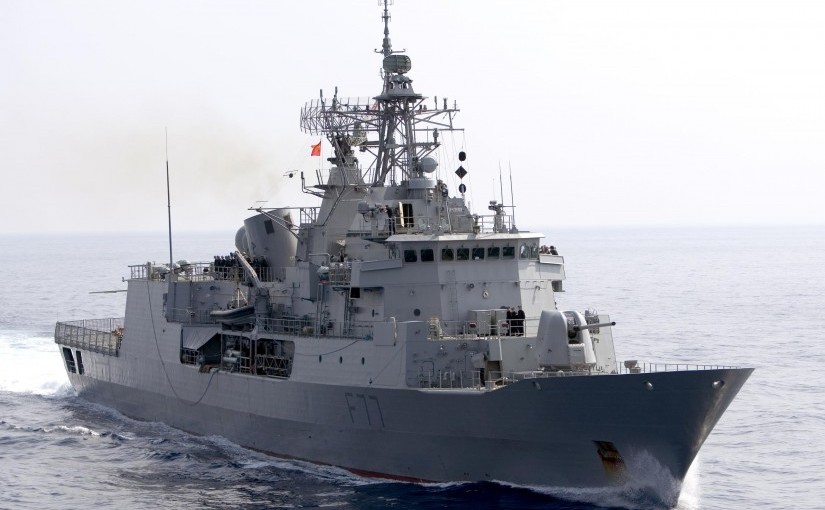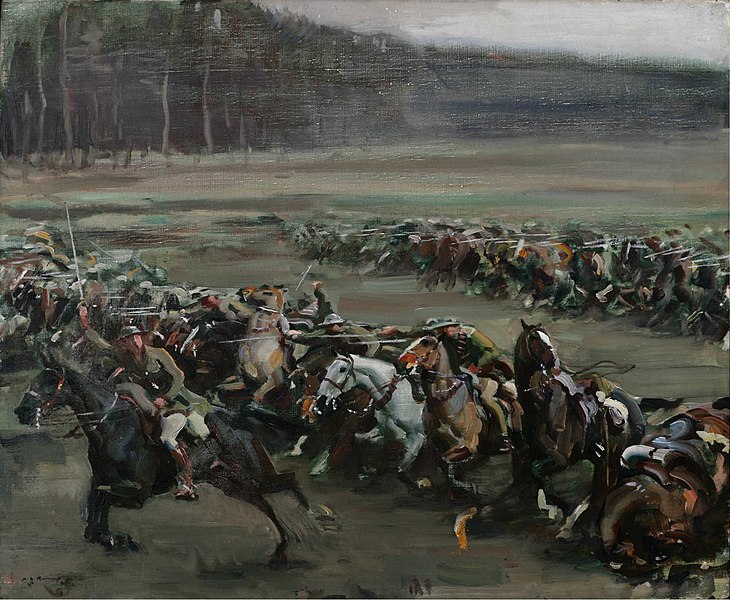By Darlene Blakeley
Eleven members of Canada’s Naval Reserve are experiencing a once-in-a-lifetime opportunity to see first-hand what service is like in a Royal New Zealand Navy (RNZN) warship.
Nine bo’suns and two cooks from Naval Reserve Divisions across the country are sailing aboard the RNZN’s Anzac-class frigate Te Kaha as it transits from Honolulu, Hawaii to Victoria.
 |
| The New Zealand Navy RNZN Te Kaha |
The sailors joined the ship as part of the REGULUS program, which facilitates exchanges with partner navies from around the world, providing unique training opportunities and exposing sailors to the diverse cultures of allied navies. While sharpening sailors’ skills, the REGULUS program also helps strengthen relationships with allied nations, increasing interoperability and reinforcing the Royal Canadian Navy’s commitment to international peace and security.
Master Seaman Kaitlin Braithwaite from the Naval Reserve Division HMCS Prevost in London, Ont., was the catalyst for this group’s deployment. While working and training as a civilian primary school teacher in Auckland, NZ, she was given the opportunity to consolidate her skills as a bo’sun in the Naval Reserve as well. Through the REGULUS program, she requested and was authorized to sail aboard the Te Kaha when it departed Devonport, NZ, en route to Victoria where it will be undergoing a frigate system upgrade.
“Joining a new ship is always a bit daunting but I could not have been welcomed any better,” she says. “Every sailor welcomed me on board and helped me become a member of the crew.”
MS Braithwaite was able to join the RNZN gunners (similar to bo’suns) on bridge watches and says that functions such as lookouts and officer-of-the-watch duties are the same.
“However, once we left New Zealand there was not much for the lookout to see – open ocean with no contacts for over nine days,” she says. “All of my experience sailing in Canada has been on the Kingston-class maritime coastal defence vessels, which mainly keep to the coast for calmer waters. As soon as we departed New Zealand it was a straight course north to Canada experiencing sea state seven [six to nine metre waves].”
By mid February, Te Kaha had come alongside Pearl Harbour Naval Base in Honolulu en route to Canada.
“This was a welcome R&R stop that showed me just how welcoming the New Zealand navy could be. Their crew was always planning activities such as surfing, sky diving, and cage diving,” explains MS Braithwaite.
It was in Honolulu that 10 additional naval reservists joined MS Braithwaite in the ship as part of the REGULUS program.
“I was happy to see some familiar faces and was encouraged that I could help them adjust to ship life onboard the Te Kaha,” she says.
She explains that the name “Te Kaha” is Maori, meaning “fighting prowess” or “strength.” The ship’s motto is “He Ponanga Kaha” or “Service with Strength”, embodying the strength of the ship, the RNZN and service to country.
“This experience has shown me that even though thousands of nautical miles separate New Zealand and Canada, we are much the same,” says MS Braithwaite. “Our values and traditions as sailors translate across oceans.”
Her time with the crew of Te Kaha ended when the ship reached Victoria on March 5, but, she says, “The new friendships and lessons I learned while onboard Te Kaha will last a lifetime.”
Master Seaman Kaitlin Braithwaite from the Naval Reserve Division HMCS Prevost in London, Ont., was the catalyst for this group’s deployment. While working and training as a civilian primary school teacher in Auckland, NZ, she was given the opportunity to consolidate her skills as a bo’sun in the Naval Reserve as well. Through the REGULUS program, she requested and was authorized to sail aboard the Te Kaha when it departed Devonport, NZ, en route to Victoria where it will be undergoing a frigate system upgrade.
“Joining a new ship is always a bit daunting but I could not have been welcomed any better,” she says. “Every sailor welcomed me on board and helped me become a member of the crew.”
MS Braithwaite was able to join the RNZN gunners (similar to bo’suns) on bridge watches and says that functions such as lookouts and officer-of-the-watch duties are the same.
“However, once we left New Zealand there was not much for the lookout to see – open ocean with no contacts for over nine days,” she says. “All of my experience sailing in Canada has been on the Kingston-class maritime coastal defence vessels, which mainly keep to the coast for calmer waters. As soon as we departed New Zealand it was a straight course north to Canada experiencing sea state seven [six to nine metre waves].”
By mid February, Te Kaha had come alongside Pearl Harbour Naval Base in Honolulu en route to Canada.
“This was a welcome R&R stop that showed me just how welcoming the New Zealand navy could be. Their crew was always planning activities such as surfing, sky diving, and cage diving,” explains MS Braithwaite.
It was in Honolulu that 10 additional naval reservists joined MS Braithwaite in the ship as part of the REGULUS program.
“I was happy to see some familiar faces and was encouraged that I could help them adjust to ship life onboard the Te Kaha,” she says.
She explains that the name “Te Kaha” is Maori, meaning “fighting prowess” or “strength.” The ship’s motto is “He Ponanga Kaha” or “Service with Strength”, embodying the strength of the ship, the RNZN and service to country.
“This experience has shown me that even though thousands of nautical miles separate New Zealand and Canada, we are much the same,” says MS Braithwaite. “Our values and traditions as sailors translate across oceans.”
Her time with the crew of Te Kaha ended when the ship reached Victoria on March 5, but, she says, “The new friendships and lessons I learned while onboard Te Kaha will last a lifetime.”











